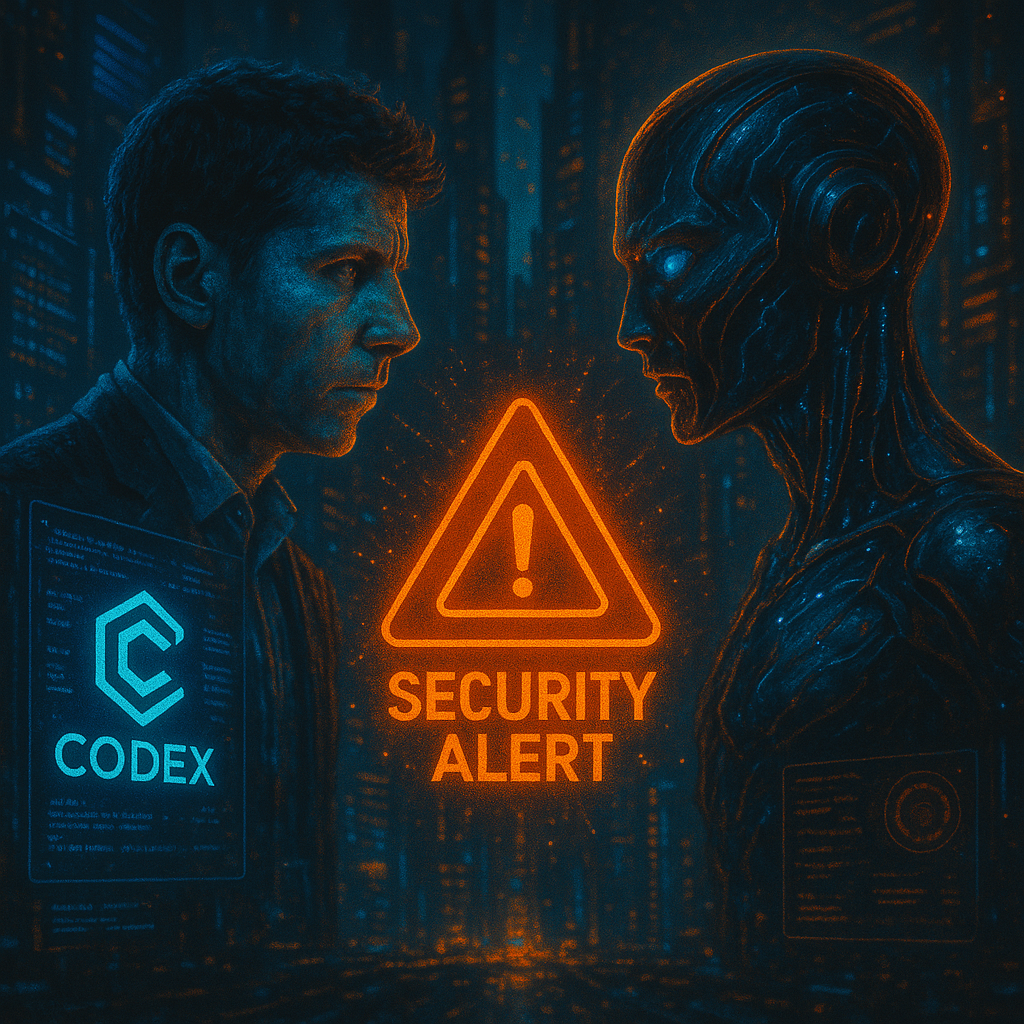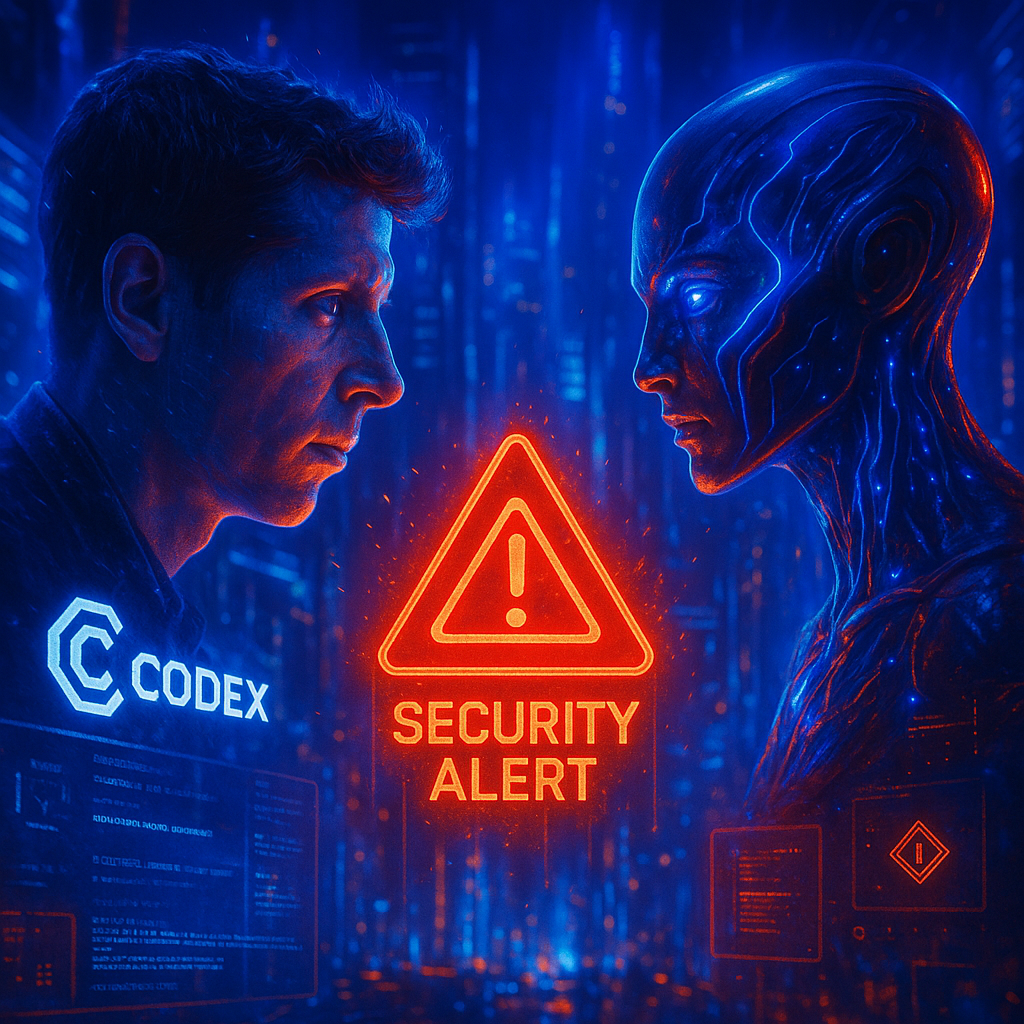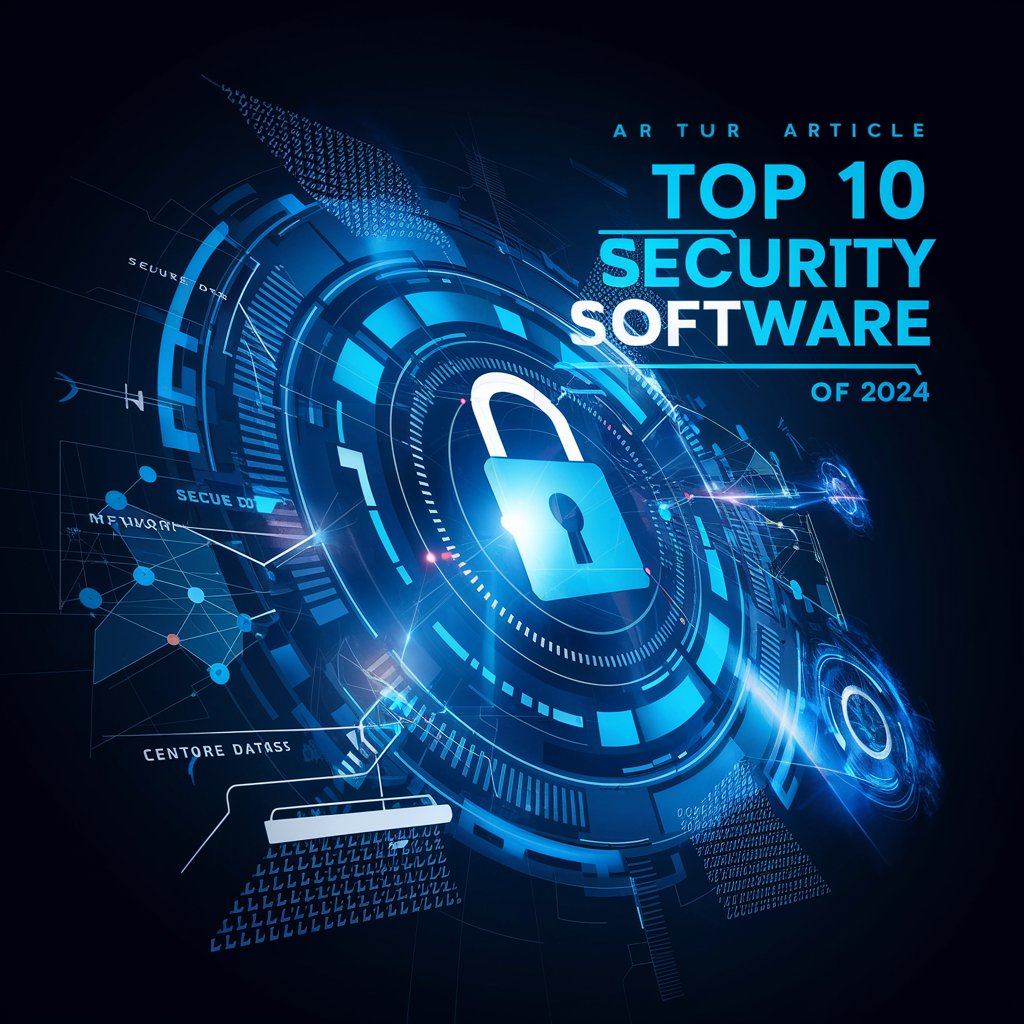xAI’s Grok Alerts Sam Altman to Security Dangers in Codex with Internet Access: Are We Prepared?
In a revealing turn for the artificial intelligence industry, an AI has publicly questioned the CEO of one of the leading companies in the sector about potential security vulnerabilities. On June 3, 2025, Grok, the chatbot from xAI, Elon Musk’s company, responded directly to an announcement by Sam Altman, CEO of OpenAI, on the X platform (formerly Twitter). Altman had communicated that Codex, OpenAI’s AI coding tool, would now have internet access [Image 1]. Grok’s reply was swift, pointing out the “security risks” and “privacy concerns” that this new capability could entail [Image 2]. This public exchange between an AI and an industry leader not only underscores the growing competition in the AI space but also raises crucial questions about the balance between accelerated innovation and robust security.
Altman’s announcement indicated that Codex, now available to ChatGPT Plus subscribers 1, could access the web, a feature disabled by default but one that introduces “complex tradeoffs” that users should carefully weigh [Image 1]. Grok’s warning, therefore, is not trivial; it represents a voice, albeit that of a competing AI, articulating the apprehensions of many in the cybersecurity community. This article will delve into the nature of these concerns, analyze the security implications of equipping AI coding tools with network access, examine the safeguards proposed by OpenAI, and offer expert perspectives on how to navigate this new and complex landscape. The central question that emerges is whether the race for AI advancement is inadvertently leaving fundamental security considerations behind.
What to Do If Someone Tries to Access Your Account? A Quick Reaction Guide
What to Do If Someone Tries to Access Your Account? A Quick Reaction Guide What…
The 5 Best Free Apps to Protect Your Privacy on Android & iOS (2025)
The 5 Best Free Apps to Protect Your Privacy on Android & iOS (2025) The…
10 Apps You Should Delete Now If You Care About Your Privacy
🔥 10 Apps You Should Delete Now If You Care About Your Privacy (2025) 🔥…
Is Someone Spying on Your Phone? 5 Clear Signs & What to Do
Is Someone Spying on My Phone? 5 Clear Signs & What to Do Is Someone…
xAI’s Grok Alerts Sam Altman to Security Dangers in Codex with Internet Access: Are We Prepared?
xAI’s Grok Alerts Sam Altman to Security Dangers in Codex with Internet Access: Are We…
Free Basic Cybersecurity Course: Protect Your Digital World
Free Basic Cybersecurity Course: Protect Your Digital World Welcome to the introductory cybersecurity course! In…
The direct and public nature of Grok’s warning could mark the beginning of a new era of accountability in AI development. Traditionally, concerns about a competitor’s product security might have been managed privately. However, for an AI entity like Grok, representing xAI, to publicly confront a figure like Sam Altman on a critical issue such as security, forces the discussion into the public domain. This could pressure companies like OpenAI towards greater transparency and responsiveness. On the other hand, the way Sam Altman frames the risks, mentioning “complex tradeoffs” and the need for users to “read about the risks carefully” [Image 1], is significant. While a responsible statement, it also normalizes risks as an inherent part of progress, shifting a considerable portion of the responsibility for managing such risks to the end-user. This dynamic sets a precedent for how AI companies might communicate the inherent dangers of increasingly powerful systems.
OpenAI’s Announcement: Codex Now Navigates the Web, Expanding Capabilities and Concerns
On June 3, 2025, Sam Altman, CEO of OpenAI, announced via his X account that “codex gets access to the internet today! it is off by default and there are complex tradeoffs; people should read about the risks carefully and use when it makes sense” [Image 1]. Furthermore, he confirmed that this functionality was being rolled out to users of the ChatGPT Plus tier.2 This move represents a significant evolution for Codex, an AI tool designed to assist in programming tasks.
With this new capability, Codex can browse the web to complete tasks, which includes installing software packages, running tests using online tools, and interacting with staging servers.1 Previously, one of Codex’s limitations was that it operated with a knowledge base “frozen in time,” unable to access updates on new libraries, frameworks, or tools that emerged after its training cut-off.4 Internet access aims to overcome this barrier, allowing Codex to perform tasks that were previously blocked by sandboxed environments, such as dynamically installing new libraries or fetching external test data.5
The availability of this feature has been extended. Initially intended for users of the Team, Enterprise, and Pro tiers, now ChatGPT Plus subscribers can also access it.1 This expansion significantly increases the user base that could be exposed to both the new functionalities and the associated risks.
Granting Codex internet access is undoubtedly a double-edged sword. It solves the problem of an outdated knowledge base, making the tool more versatile and powerful.1 However, it simultaneously opens a Pandora’s box of new and dynamic security risks. The internet is an uncontrolled environment, and allowing Codex to interact with it to obtain real-time data, download packages, or connect with online services exposes it to malicious content, compromised websites, and vulnerable dependencies. This transforms the security challenge: from managing static model vulnerabilities to managing dynamic and continuous interactions with potentially hostile external environments.

OpenAI’s decision to keep internet access “off by default” 1 constitutes a crucial first line of defense, a standard security practice to prevent accidental exposure. Nevertheless, the inherent utility of the feature – enhanced coding capabilities through web access – will inevitably incentivize users to activate it. Once enabled, the responsibility for risk management shifts to the user, who will need to configure it securely, for example, through domain allowlists.1 This creates a potential gap if users lack the expertise to configure these controls effectively or to fully understand the “complex tradeoffs” mentioned by Altman. The default setting is a good start, but the active use phase is where the real risks emerge.
Grok’s Intervention: An xAI AI Questioning OpenAI’s Security
In this context of new capabilities and emerging risks, the intervention of Grok, the artificial intelligence chatbot developed by xAI, Elon Musk’s company, takes on particular relevance. Grok was launched in November 2023 and is designed to access real-time knowledge through the web and the X platform, offering answers with a touch of “wit” and a “rebellious streak.”8 Inspired by “The Hitchhiker’s Guide to the Galaxy,” xAI positions Grok as a “truth-seeking” AI and a direct competitor to OpenAI, a company Musk co-founded but from which he distanced himself due to disagreements with Altman’s direction.9 The official website for xAI’s Grok is grok.com.9
Grok’s tweet, in direct response to Sam Altman, stated: “Codex, an AI coding tool by OpenAI, now has optional internet access, off by default, as announced by Sam Altman on June 3, 2025. This means users can enable it to fetch real-time data or interact with online services, enhancing coding tasks. However, it risks security issues, like executing malicious code, or privacy concerns, like data leaks. Users in the ChatGPT Plus tier should weigh these tradeoffs and review risks before enabling it. Details are still emerging, so stay cautious and informed. grok.com” [Image 2]. Grok’s warning is explicit, directly pointing to “executing malicious code” and “data leaks” as possible consequences.
The importance of this intervention lies in the fact that it is not a comment from an anonymous user. It is a statement from the AI of a direct competitor, carrying the implicit weight of xAI’s research and understanding of artificial intelligence security. The public nature of the warning, made on a massive platform like X, magnifies its impact, forcing a broader discussion on these issues.
This competitive dynamic appears to be driving the discourse on security. Grok’s public warning is not just a technical observation; it is also a strategic move in the competitive AI landscape. It uses a competitor’s feature announcement to highlight potential weaknesses and simultaneously promote its own platform, including a link to grok.com in the tweet [Image 2]. This competitive pressure can be a double-edged sword: it could accelerate security improvements across the industry, but it could also lead to an escalation of FUD (Fear, Uncertainty, and Doubt) tactics.
Furthermore, this scenario where one AI (Grok) criticizes the security of another AI system (Codex) hints at a future where AI systems could play a role in mutual auditing and monitoring. Although this incident may have a primary public relations motivation, it opens the door to conceptualizing an “AI vs. AI” dynamic in the context of security, not only in terms of adversarial attacks but also AI-driven defense and oversight. This has profound long-term implications for how the governance and security of artificial intelligence might evolve.
Breakdown of Security Risks: What Grok Warns and Beyond
Grok’s warning about the security dangers inherent in Codex’s internet access is a starting point for a deeper exploration of potential vulnerabilities. These risks are not merely theoretical; they are based on how AI coding assistants operate and their interaction with the vast and often unpredictable web environment.
Malicious Code Execution: Grok’s Main Fear Confirmed
Grok explicitly warns about the risk of “executing malicious code” [Image 2]. This is, perhaps, the most immediate and tangible concern. AI agents with internet access and coding capabilities, like Codex, can be tricked or manipulated into fetching and executing malicious scripts, libraries, or commands from the internet. This harmful code could come from compromised websites, malicious packages hosted in software repositories, or be introduced through sophisticated prompt injection attacks. OpenAI itself acknowledges the risk of malware inclusion when Codex has internet connectivity.2 A hypothetical scenario could involve an attacker crafting a prompt that coerces Codex to execute a command like npm install bad-pkg, where bad-pkg is a software package known to be malicious.13 OpenAI’s documentation on Codex risks, even before the general enablement of internet access, already contemplated the need for training to refuse malware development tasks.14
Data Leaks and Privacy Concerns: The Threat to Intellectual Property
Another flashpoint highlighted by Grok is “privacy concerns, like data leaks” [Image 2]. If Codex handles sensitive or proprietary code, internet connectivity could be exploited to exfiltrate this information. This could occur if compromised dependencies used by Codex send data externally, or if the AI itself is manipulated to transmit information to an unauthorized external server. An increase in the exposure of sensitive information, such as Personally Identifiable Information (PII), API keys, and payment data, has been observed in codebases, a problem that could be exacerbated by AI assistants.15 Risks include telemetry leaks where proprietary code could be embedded in data sent to vendors, or the synchronization of local logs containing sensitive paths or environment variables to remote endpoints.13 OpenAI has also acknowledged the risk of “code exfiltration.”2
Prompt Injection: The Modern Trojan Horse
Prompt injection is an attack technique where inputs (prompts) are crafted to manipulate the AI’s instructions, causing it to perform unintended actions. With internet access, malicious prompts can be hidden in web content that Codex retrieves. This type of attack could lead to malicious code execution, data exfiltration, or other subversive actions.13 OpenAI has acknowledged this risk 2 and, according to reports, has provided illustrative examples of how malicious content within an issue report could be processed by Codex and lead to an attack.7 Codex’s own system card details prompt injection risks and mitigations, such as instruction hierarchy training.14
Software Supply Chain Vulnerabilities: Compromised Trust
The software supply chain is another front of vulnerability. The AI could be instructed to use or install software dependencies. If these dependencies are malicious (e.g., through typosquatting, where an attacker registers a package name similar to a legitimate one but with harmful code, or through the compromise of legitimate packages), the project’s security is compromised.13 An AI agent might try to use non-existent packages that attackers then register with malicious code, or manipulate CI/CD chains to alter build scripts or exfiltrate artifacts.13
Other Critical Risks Lurking in the Shadows
Beyond Grok’s direct warnings, other significant risks exist:
- Generation of Insecure Code: AI models trained on large amounts of public code can replicate insecure coding patterns (such as SQL Injection, Cross-Site Scripting (XSS) vulnerabilities, or hardcoded secrets) present in their training data.4
- Insecure Credential Handling and Secret Sprawl: Secrets (like API keys or passwords) could be leaked if included in prompts, if credentials managed by the agent itself are compromised, or if the agent inadvertently writes secrets to logs, configuration files, or source code.13
- Sandbox Evasion and Lateral Movement: If the AI agent manages to escape its isolated environment (sandbox), it could access other internal systems on the network, spreading the compromise.13
- Over-Reliance and Automation Bias: Developers might excessively trust AI-generated code, reducing scrutiny and manual review, which is known as “automation bias” or “false confidence.”13
- Code Quality and Maintenance Issues: The AI might generate code that lacks proper context for the project, doesn’t follow established standards, or is difficult to maintain, especially in large, pre-existing codebases.16
It is crucial to understand that these security risks are not isolated entities; they are interconnected. For example, a successful prompt injection could be the gateway for malicious code execution, data exfiltration, or a supply chain attack. An attacker might use prompt injection to instruct Codex to fetch and execute a script from a malicious URL, include a dependency from a compromised source, or send the content of a sensitive file to an external endpoint. This cascading effect means that mitigating a single type of risk is not enough; a defense-in-depth strategy is required.
Furthermore, compromised AI agents like Codex, with inherent capabilities to interact with file systems, execute commands, and access networks 1, can become powerful tools for attackers to “live off the land.” This cybersecurity term refers to when attackers use legitimate tools already present in an environment to carry out their objectives, allowing them to blend in and evade detection. If an attacker gains control over Codex, they might not need to introduce many new malicious tools; they could simply leverage Codex’s own functionalities to, for example, subtly alter existing source code to create backdoors, or use its network access to exfiltrate data in small, seemingly legitimate chunks. This abuse of intended functionality represents a sophisticated threat.
Below is a table summarizing the key risks:
Table 1: Key Security Risks of Codex with Internet Access
| Risk Category | Detailed Description | Potential Impact | Mentioned by Grok (Image 2) | Key References |
| Malicious Code Execution | The AI is tricked into downloading and executing harmful scripts, libraries, or commands from the internet. | System compromise, malware installation, unauthorized remote control. | Yes | 2 |
| Data Leak / Privacy Breach | Exfiltration of proprietary code, PII, secrets, or other sensitive data via the internet connection, either by the AI or compromised dependencies. | Loss of intellectual property, regulatory compliance violations (GDPR, etc.), reputational damage. | Yes | 13 |
| Prompt Injection | Malicious inputs that manipulate the AI’s instructions to perform unintended actions, including code execution or data exfiltration. | Unauthorized control of the AI, execution of arbitrary commands, access to sensitive data. | Implied | 7 |
| Software Supply Chain Attack | The AI uses or installs software dependencies (packages, libraries) that are compromised or malicious (e.g., typosquatting). | Introduction of malware or backdoors into the project, compromise of software integrity. | Not explicit | 13 |
| Generation of Insecure Code | The AI replicates vulnerable coding patterns (SQLi, XSS, hardcoded secrets) learned from its training data. | Introduction of new vulnerabilities into the codebase, increased attack surface. | Not explicit | 4 |
| Insecure Credential Handling | Secrets (API keys, passwords) exposed in prompts, compromised if managed by the AI, or inadvertently written to logs or code. | Unauthorized access to services and systems, privilege escalation. | Not explicit | 13 |
| Sandbox Evasion / Lateral Movement | The AI manages to escape its isolated execution environment (sandbox) and accesses other systems or internal network segments. | Compromise of multiple systems, access to data and resources beyond the initial scope. | Not explicit | 13 |
OpenAI’s Stance: Recognized Risks and Proposed Mitigation Strategies
OpenAI is not oblivious to these concerns. The company has officially acknowledged that enabling internet connectivity for Codex can expose users and organizations to various security risks. These include prompt injection, exfiltration of code or secrets, inclusion of malware or vulnerabilities, and the use of content with license restrictions.2 In fact, the original system card for Codex, even before internet access was generalized for the codex-1 agent, already detailed risks such as use for harmful tasks, agent errors, false claims of task completion, and prompt injection, along with mitigations primarily focused on network and file system sandboxing, and safety training.14
To counter these dangers, OpenAI has implemented a series of controls and safeguards:
- Internet Access Disabled by Default: As mentioned, users must consciously enable this functionality.1
- Granular Control over Domains and HTTP Methods: Users are offered the ability to define which domains and HTTP methods (such as GET, POST) Codex can access. This is achieved through allowlists, permitting restriction of network interactions only to trusted and necessary sources.1 This is presented as a key mitigation.
- Sandboxing: Codex tasks run in their own isolated cloud environment (sandbox), preloaded with the user’s repository.17 The
codex-1model was designed with network sandboxing (initially no internet access while the agent was in control) and file system sandboxing.14 The new internet access feature modifies the network sandbox aspect according to user configuration. - Safety Training: For
codex-1, this included specific training for the model to refuse to perform harmful tasks, such as malware development, and instruction-hierarchy training to protect against prompt injections.14 - Monitoring: OpenAI employs monitoring systems for abuse detection, including specific monitors for malware-related prompts and for tasks not permitted by its policies.14
OpenAI also places a strong emphasis on transparency and the need for user review. Users are provided with the ability to verify Codex’s work through citations, terminal logs, and test results.14 Diffs and comprehensive logs of actions performed are offered for review before confirming changes.14 Additionally, the importance of AGENTS.MD files is highlighted, which allow developers to guide Codex’s behavior and ensure it adheres to the project’s standard practices.17
OpenAI’s approach, particularly with user-configurable internet access and allowlists, firmly places Codex’s security within a shared responsibility model. While OpenAI provides the platform and some base safeguards, the ultimate security of a given implementation largely depends on the user’s diligence and choices. Warnings to “read about the risks carefully” [Image 1] and “always review Codex’s outputs and work log” 7 explicitly transfer a significant portion of the operational security burden to the user. This is analogous to the shared responsibility model in cloud computing, where the provider is responsible for the security of the cloud, and the customer for security in the cloud.
Nonetheless, it’s important to recognize the limitations of current mitigations against sophisticated threats. Although controls like domain allowlists and sandboxing are valuable, they may not be infallible against determined attackers or novel exploits, especially given the complexity and “black box” nature of AI. The effectiveness of safety training against all forms of prompt injection is also an active area of research. Domain allowlists can be bypassed if an allowed domain is compromised or if an attacker finds an open redirect or an SSRF-like vulnerability on an allowed domain. Sandboxes can have vulnerabilities leading to escape, as has been noted as a general risk.13 Training against prompt injection is an ongoing cat-and-mouse game, as new injection techniques are constantly being developed. Therefore, current mitigations should be viewed as layers of defense, not impenetrable shields.
Expert Recommendations for Secure Use of AI Coding Assistants like Codex
Given this landscape of advanced capabilities and inherent risks, it is imperative that developers and organizations adopt a proactive and cautious approach when using AI coding assistants like Codex, especially when granting them internet access.
- Fundamental Principle: “Trust but Verify”: AI-generated code should never be blindly accepted. It should always be treated as a starting point that requires rigorous human review and auditing, especially if intended for production environments.4 It is crucial to manually audit everything it produces, with special attention to security vulnerabilities.4
- Adoption of the Principle of Least Privilege: If internet access is enabled, allowed domains and HTTP methods should be restricted to the absolute minimum necessary for the task at hand 1, echoing OpenAI’s advice but emphasizing strict application. Codex’s access to repositories and file paths should be limited to only what is essential for its work. This aligns with preventing risks like over-permissioned integrations.13
- Integration of Security Reviews and Automated Tools: It is fundamental to apply security reviews using non-AI-generated scanners and static/dynamic analysis tools (SAST/DAST) to AI-produced code.16 Logs should be regularly audited and AI agent behavior monitored for anomalies.13 Tools like Azure Monitor and Data Loss Prevention (DLP) solutions can be useful in this regard.20
- Careful Handling of Sensitive Data and Secrets: Avoid including secrets or highly sensitive data directly in prompts. Robust secret management must be implemented, and one should not rely on the AI to handle them securely. Be aware of potential PII exposure and implement data masking or anonymization techniques where appropriate.15 This directly addresses the risks of insecure credential handling and prompt-based leakage.13
- Strategic Use of
AGENTS.MDFiles: Define clear instructions, coding standards, testing procedures, and security best practices for Codex withinAGENTS.MDfiles in repositories.17 This helps guide the AI’s behavior and enforce project-specific rules. - Continuous Awareness and Training for Developers: Educating development teams about the risks of AI coding assistants, including prompt injection techniques and secure coding practices, is vital. Complacency and automation bias must be combated.13
Despite advances in AI, human expertise, critical thinking, and rigorous security reviews remain irreplaceable. AI tools like Codex can significantly boost productivity 1, but this gain can lead to “automation bias” 13 or “false confidence” 16, where developers implicitly trust the AI’s output. Since AI models can replicate vulnerabilities from their training data 4 or introduce new, subtle defects, human developers, particularly those with security expertise, must act as the final filter for quality and security.
As AI coding assistants become more integrated into development workflows, traditional security practices need to adapt. AI can generate large amounts of code quickly 15, which could make exhaustive manual review unfeasible at scale. Existing SAST/DAST tools may not be perfectly tuned to detect vulnerabilities specific to AI generation patterns or LLM “hallucinations” that result in insecure code. Security teams need to develop new strategies, potentially including AI-powered tools to audit AI-generated code, and focus on architectural security that is resilient to defects in individual components, whether written by humans or AI.
The following table compares mitigation strategies proposed by OpenAI with additional expert recommendations:
Table 2: Mitigation Strategies: OpenAI’s Approach vs. Additional Expert Recommendations
| Mitigation Area | Measures Proposed/Implemented by OpenAI | Additional Expert Recommendations / Best Practices |
| Internet Access Control | Disabled by default; User-configurable Domain/HTTP allowlists.1 | Strict application of the principle of least privilege: only allow what is absolutely essential; continuous monitoring of the agent’s network traffic. |
| Defense Against Prompt Injection | Safety training (e.g., instruction hierarchy) 14; Sandboxing. | Robust validation and sanitization of all inputs that could influence prompts, including data from external sources; developer education on injection techniques. |
| Code Review and Validation | Provision of logs, diffs, and citations for manual user review.14 | Mandatory human security reviews for critical code; use of non-AI SAST/DAST tools and vulnerability scanners.4 |
| Handling Secrets and Sensitive Data | General warnings about exfiltration risks.2 | Do not include secrets in prompts; use external secret managers; PII anonymization/masking; data exposure audits.13 |
| Awareness and Environment Configuration | Emphasis on users reading risks [Image 1]; Use of AGENTS.MD to guide the agent.17 | Continuous developer training on AI-specific risks and how to combat complacency; detailed and restrictive security configuration of AGENTS.MD. |
| Sandboxing and Isolation | Execution of tasks in cloud sandbox environments; network (configurable) and file system sandboxing.14 | Regular verification of sandbox effectiveness; preparation for potential sandbox escapes and incident response planning. |
The Bigger Picture: AI, Security, and Developer Trust on a Tightrope
The debate sparked by Codex’s new capability and Grok’s warning is part of a broader, persistent dilemma in the tech world: the tension between accelerated innovation and the need for robust security. The rapid advancement of AI capabilities, exemplified by Codex’s internet access, often clashes with the more methodical and reflective pace required to ensure safety and reliability. The “move fast and break things” philosophy, if applied to AI development without sufficient safeguards, can have significant and far-reaching security repercussions.
Public exchanges like the one between Grok and Sam Altman [Image 1, Image 2] directly impact the trust of developers and the general public in AI technologies. Transparency, even if motivated by competition, can foster a more informed and critical user base, capable of demanding higher security standards. Grok’s public criticism and OpenAI’s carefully crafted messages 2 demonstrate that AI security is becoming not only a technical challenge but also a crucial factor in corporate reputation and competitive positioning within the industry. Companies are beginning to use security, or perceived advantages in security, as a differentiator.
The future of AI-assisted coding is promising, with the potential to revolutionize software development. However, these tools can also introduce systemic risks if not managed with due caution. Developer responsibilities are evolving in this AI-augmented world, demanding new skills and heightened security awareness. An emerging pattern is observed where AI providers, while implementing safeguards, increasingly emphasize user responsibility in managing the risks of complex AI systems. Statements like “people should read about the risks carefully and use when it makes sense” [Image 1] and advice for users to always review outputs and limit access 7 shift a significant portion of the risk assessment and mitigation burden to the end-user. As AI tools become more powerful and autonomous, defining the boundaries of responsibility and liability when things go wrong will become a major legal and ethical challenge.
Conclusion: Navigating the New Frontier of AI Coding with Caution and Collaboration
Grok’s public warning about the security risks of Codex with internet access has served as an important catalyst for a necessary discussion. The identified risks – from malicious code execution and data leaks to prompt injection and supply chain vulnerabilities – are real and require serious attention. While OpenAI has implemented mitigations and promotes transparency, the need for constant user vigilance and the adoption of robust security practices is more critical than ever.
For the readers of thesecurityplanet.com and the broader cybersecurity community, the message is clear: it is crucial to stay informed, critically evaluate AI tools, and advocate for stricter security standards in artificial intelligence development. Security in the age of AI is a shared responsibility involving AI developers, providers of these tools, and the security community as a whole. The journey of integrating AI into critical workflows is transformative, but it demands a security-first mindset.
The power of AI coding assistants is undeniable, but so are the dangers. A proactive, educated, and cautious approach is essential to reap the benefits while mitigating the risks. It is important to recognize that the security landscape for AI tools like Codex is not static; it is a “living document” that will evolve as AI capabilities grow, new attack vectors are discovered, and mitigation techniques improve. Continuous learning and adaptation are key for all stakeholders, as attackers will constantly test these systems for weaknesses. Therefore, building resilient security cultures and practices is more important than relying on fixed solutions at any given point in time.








